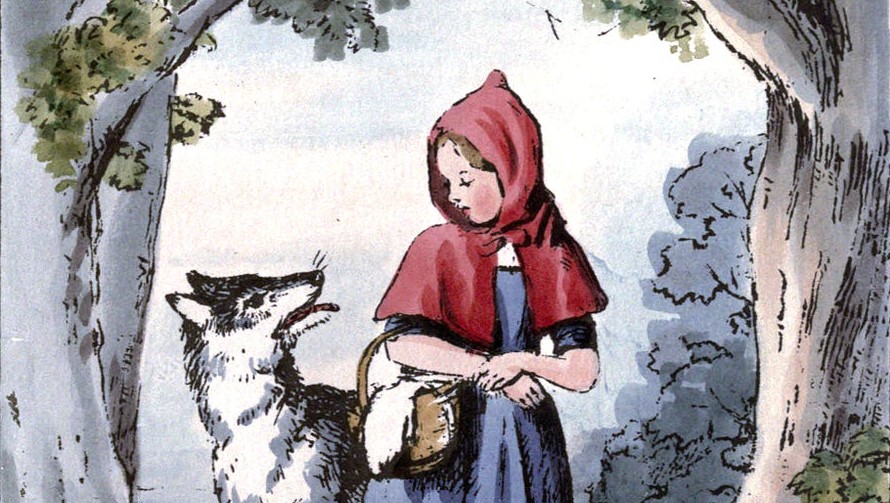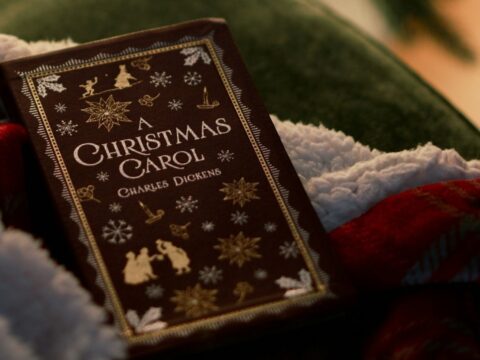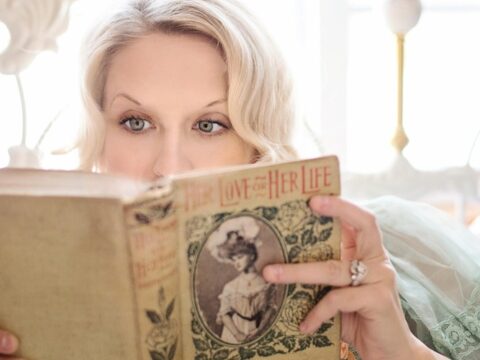You know, I find great delight delving into the origins of fairy tales. Turning a mirror on these cute childhood stories to discover horror and mayhem lurking in the shadows is oddly satisfying if I’m perfectly honest. Classic example: the famously adorable Little Red Riding Hood.
Was there ever such a lovely tale? One about a pretty red cape, a pretty little girl, and a cunning, cross-dressing wolf? Toss in a handsome woodsman, a basket of sweets, some violence, and a daring rescue and this story is easily an Academy Award winner. Even better, it teaches wholesome lessons about not trusting smooth-talking strangers with bushy tails, right?
Weeeeeelllll that isn’t exactly the moral here . . . If you want to preserve your childhood innocence of Little Red Riding Hood, please stop reading now. But if you’re as fascinated as I am in everything that made this original tale so grim, read on.
Spoilers: This Story is NOT about Stranger Danger
Oh I know that’s what most modern versions claim. It seems to make sense right? Young people with loose lips cause all kinds of problems, like dangerous strangers killing their grandparents, right? Well maybe, but that wasn’t the original moral.
The first written version of Little Red Riding Hood was published in 1697 by the famous Charles Perrault. His classic French version is where Little Red Riding Hood got her name, but Perrault wasn’t writing his fairy tales for children. Nope. In fact Perrault’s primary audience was the French court and King Louis XIV.
It’s widely believed that many of Perrault’s tales were written to entertain and educate the ladies of the court. And as such, several of his stories were intended just for them. Enter Little Red Riding Hood.
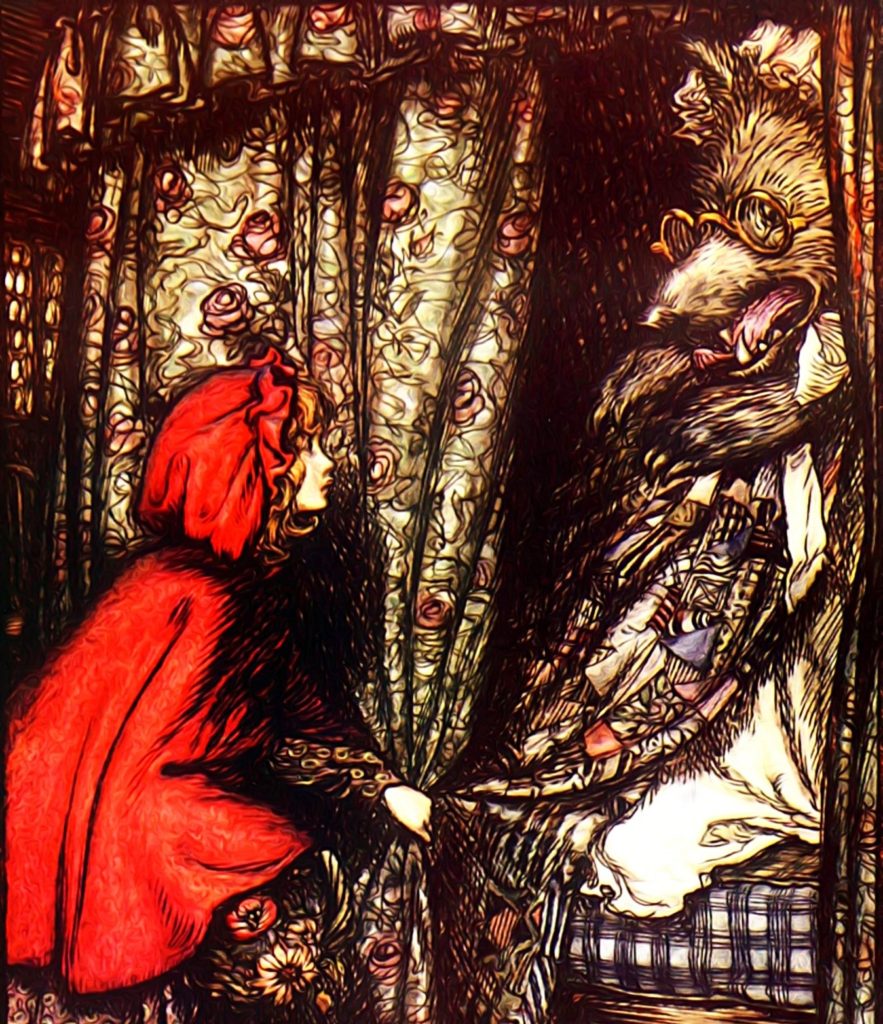
That Red Hood Is Super Symbolic
Most modern versions of Little Red Riding Hood depict her as an extremely small girl, younger than ten and perhaps even as little as six. But Perrault’s choice of details in this tale will make you think twice about this.
Little Red’s hood actually represents some level of maturity. Perrault lived in a time when hair was considered one of women’s primary ways of attracting men, so as women matured it was quite commonplace to cover their hair with bonnets, hairnets, or other head coverings. So this “little girl’s” hood comes with implications.
But that’s not all. Many historians believe the color of Little Red Riding Hood’s clothing spells out loud and clear that this girl has had her first period and is therefore venturing out into the forest of womanly sexuality. It’s also worth noting that in Perrault’s time, red was considered anything but a chaste color. In fact, this sweet young thing running around the forest in red was kind of like carrying a flashing billboard that she has a certain—ahem—reputation.
Unsurprisingly, Red traipses straight into a wolf who’s only after one thing . . . And yes. That hungry mongrel is symbolic of a man hunting for easy sex. Target acquired.
And He Certainly Has His Way with Her . . .
The original interlude between Red and Mr. Wolf disguised as her grandmother is more risqué than you might remember. Firstly, he invites her not just to come closer but actually climb into bed with him. And Red takes off her clothes before joining him. Really.
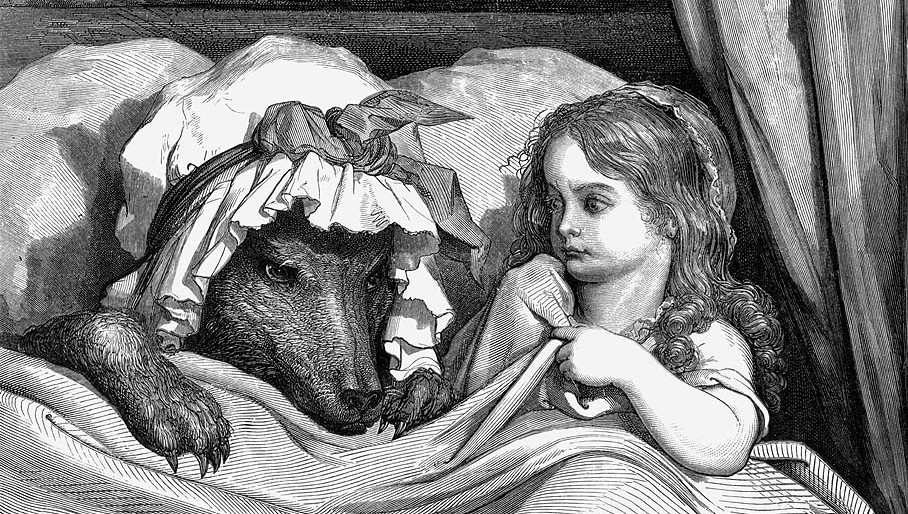
Then comes the famous exchange of “Grandmother, what big ears you have!” Red naming each of the wolf’s body parts in the bed has some pretty sensual undertones, but I’ll leave that to your imagination. Then once she notices his enormous teeth, the wolf swallows her whole. This version ends right there with Little Red Riding Hood devoured and dead.
The French expression “Elle a vu le loup”—she has seen the wolf—was a saying from Perrault’s time period to describe a girl who’s lost her virginity. Need I say more?
And the Moral Is . . .
Perrault spells out the moral right at the end of his story, and even though he does mention that well-bred young ladies should not listen to strangers, he doesn’t leave it there:
There are various kinds of wolves . . . those who are charming, quiet, polite, unassuming, complacent, and sweet, who pursue young women at home and in the streets. And unfortunately, it is these gentle wolves who are the most dangerous ones of all.
Charles Perrault, Little Red Riding Hood
His meaning was awfully clear: that some men who appear harmless are actually wolves in disguise who want nothing more than to steal the virtue of young ladies. And for Perrault at least, if a girl gets taken in by a beast, there is no hope for redemption afterwards.
In Perrault’s time, untoward sexual behavior was something women’s reputations never recovered from. Therefore, Red Riding Hood’s fate is pretty cut and dry.
Don’t Forget Poor Dead Granny
Along with Red’s sullied reputation, her poor Granny also reaps the consequences of her grandchild’s loose ways. In the context of the tale, it’s clearly implied that female sexuality doesn’t just swallow the girl. It can also taint the entire family.
Little Red Riding Hood was told orally long before it was ever written down, and there are versions where Granny doesn’t die a quick and dignified death in the wolf’s stomach. In the old Italian version The Story of Grandmother, her fate is actually worse.
In this version, a wolf or an ogre kills Grandma and then puts her flesh in the pantry and her blood in a bottle. When Red shows up at the house, the villain in disguise encourages her to eat the meat and drink the wine in the pantry that’s actually her dead Granny. In some versions she even attempts to eat some beans that are actually the old woman’s teeth. Ick.
This bizarre cannibalism takes the idea of destroying your family’s standing to a whole new level. But Red does escape being eaten in some of these ancient oral versions. After the wolf instructs her to burn her clothes in the fire and get in bed with him, Red claims she has to use the bathroom and hightails it back home before he catches her.
Of course it’s implied that she runs home naked, a shameful consequence for being seduced and eating her own Grandma. Like Perrault, these early, grotesque versions of Little Red Riding Hood make it pretty clear that women who fall for wolves deserve whatever death or humiliation comes their way.
Then Came the Brothers Grimm
The version of Little Red Riding Hood that most closely resembles the story we all know is the Grimm Brothers’ Little Red Cap published in 1812.
Like Perrault’s heroine, Red Cap also has a red head covering that bears the same symbolism as the red hood: a young lady mature enough to be covering her hair and having a period. In this version, Red Cap receives a warning before leaving home. Her mother advises her to “not leave the path, or you might fall down and break the glass,” meaning the bottle of wine for her Granny.
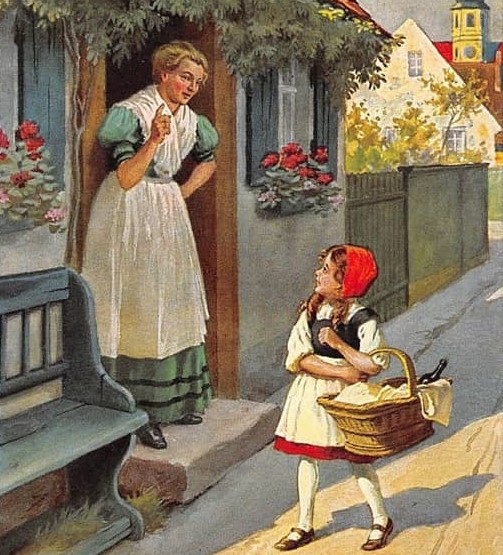
Several fairy tale academics believe that the bottle of wine in Red’s basket is a symbol of virginity, the redness of the wine symbolizing passion and its breakable glass displaying how fragile a girl’s purity is. So basically this is a thinly disguised warning from Mom to heed society’s sexual standards and not give it away.
Even after Mom warns her, Red still strays from the path and ends up not just talking to a wolf but in bed with one. The parallels are pretty clear.
But Unlike Perrault’s Heroine, Little Red Cap Survives
And she gets the second chance that Perrault’s Little Red Riding Hood never did. In the Grimms’ version, a kind huntsman hears the wolf snoring after devouring his two-course meal. Realizing the wolf ate Grandma, the man wastes no time slicing open Mr. Wolf and rescuing the ladies he swallowed whole. So the Grimms fairy tale shows that there are good men in the world as well as shady ones.
After surviving her ordeal, Little Red Cap even gets a chance to show how much she’s learned. The Grimms included a short sequence at the end when Little Red Cap meets a second wolf that she and Granny cleverly outsmart. It’s a random little episode that most people haven’t heard, but its inclusion is significant.
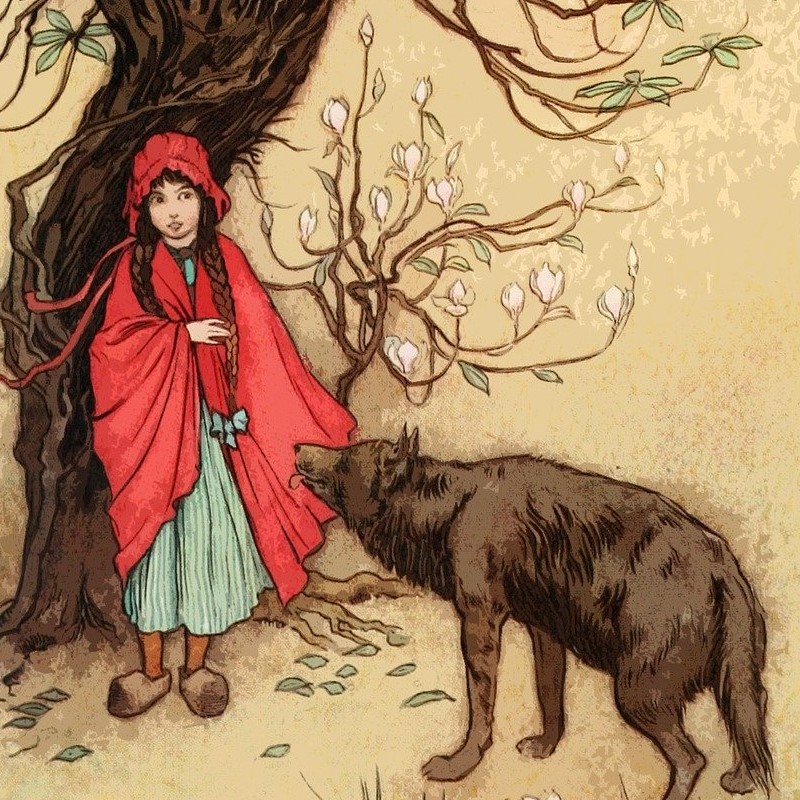
Little Red Cap’s miraculous rebirth from the wolf’s stomach most definitely carries pregnancy parallels, but it’s also a hopeful message about women who fall prey to two-faced wolves. Red Cap disobeyed her mother, strayed from the path, and lost her symbolic virginity, but that wasn’t the end all be all for her.
Instead of dying a shameful death, Red Cap is resurrected and learns a thing or two about kicking all future wolves to the curb. After being saved once, she gets a chance to save herself, which is a pretty empowering take on female sexuality, especially for the Grimms’ time period. Well done, Grimm Brothers!
Now You Know the Real Story
After hearing all the dark, sexy secrets of Little Red Riding Hood, you’ll probably see this story in a whole new light next time you read a wholesome picture book version to a small child. But I do find it entertaining to know the real meaning underneath. This is hands-down one of my all-time favorite fairy tales, but I tend to say that about all of them. ❧

